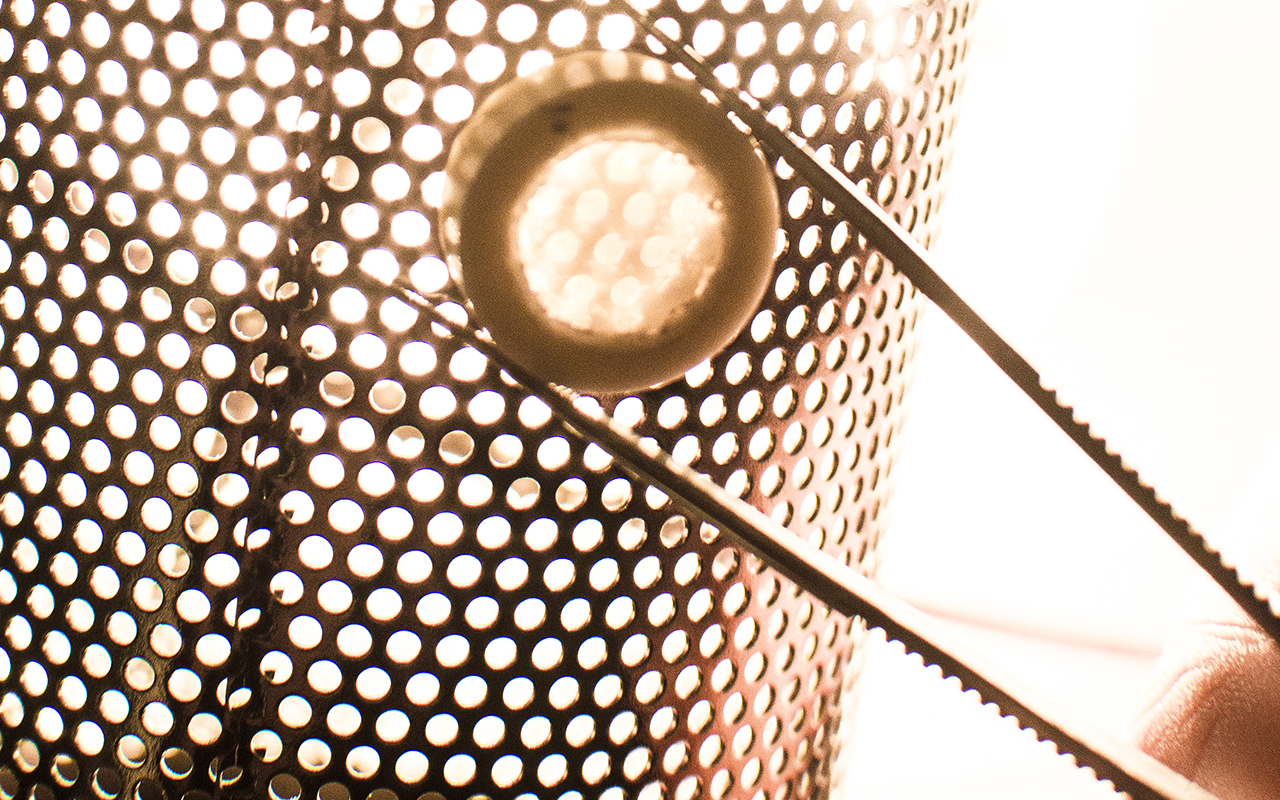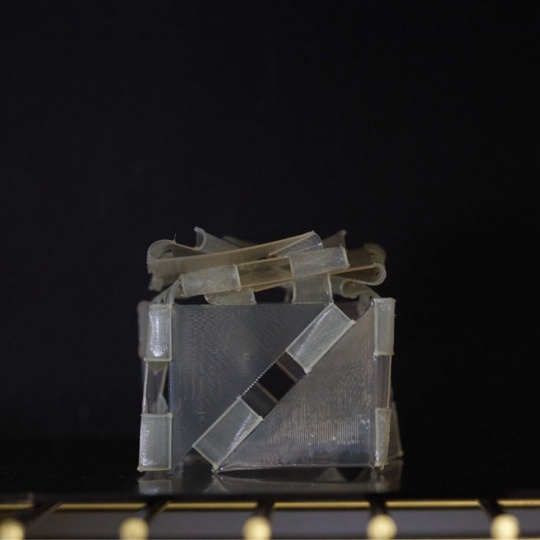(Lasers Enable Engineers to Weld Ceramics, No Furnace Required)
2019/8/22 アメリカ合衆国カリフォルニア大学サンディエゴ校 (UCSD)

・ UCSD は、極短パルスレーザーを使用して界面に沿ってセラミック材料を溶解させ、それを融合する、新しいセラミック加工技術を開発。周囲環境の条件下で実行でき、50w 未満のレーザーパワーの消費でよく、炉を使用して部品を加熱する従来のセラミック溶接法よりも実用的。
・ セラミクスは、溶解に超高温を要し、温度勾配が極端に高い状況にさらされるので、割れを引き起こし、溶接が困難な材料。生体適合性を有し、非常に硬くて粉砕に対する抵抗が強いため、バイオ医療でのインプラント材料や、電子デバイスの保護用ケースなどへの活用の関心が高い。
・ しかし、従来の溶接手法でセラミクスに電子部品を組み込むには、アセンブリ全体を高温の炉にいれなければならず、それでは電子部品が焼けてしまう。
・ 研究チームでは、その解決策として、短いパルスレーザーを2つのセラミック部品間の表面に照射して、界面のみに熱を集め、局所的な溶解を引き起こす、極短パルスレーザー溶接を試みた。
・ まず、レーザーパラメーター(露光時間、レーザーパルス数、パルスの持続時間)と、セラミック材料の光透過性、というふたつの側面の最適化に取り組んだ。適切な組み合わせでレーザーエネルギーはセラミクスと強く結合し、室温下で 50w 未満のレーザーパワーで溶接できた。
・ 極短パルスレーザーの最適加工条件は、高繰り返しレート 1MHz で 2 ピコ秒であり、適切な総パルス数と連動。これにより、溶融直径は最大化し、切削抵抗が最小化され、タイムリーな冷却ができ、最適な溶解が可能になった。
・ 必要とする箇所のみにエネルギーを的確に集中させることにより、セラミック全体の温度勾配の設定を避け、温度に敏感なセラミック材料を損傷なく包み込むことができる。
・ このコンセプトを実証するため、研究者たちは透明の円筒型キャップをセラミック管内部に溶接。その結果、シリンダー内部を真空に保っても、十分な強度があることが判明。この真空テストの手法は、電子機器や光学電子デバイスの密封度を検証するために産業界で使用されている手法と同様のもの。
・ 本技術は現在、2cm 以下の小型のセラミック部品を溶接することにのみ使用されているが、今後はスケールアップを図り、異なる種類の材料や形状についても最適化する予定。
・ 本研究は、米国防高等研究計画局(DARPA)契約番号 HR0011-16-2-0018 、米国立科学財団(NSF-PIRE)助成金番号1545852、及び UC Riverside Office of Research and Economic Development より資金提供を受けた。
URL: https://ucsdnews.ucsd.edu/pressrelease/lasers-enable-engineers-to-weld-ceramics-nofurnace-required
(関連情報)
Science 掲載論文(アブストラクトのみ:全文は有料) Ultrafast laser welding of ceramics
URL: https://science.sciencemag.org/content/365/6455/803
<NEDO海外技術情報より>
Joining the laser welding club
Laser welding is an integral part of modern manufacturing, but it fractures ceramic materials. Penilla et al. developed two methods for welding ceramics using ultrafast lasers. One method tunes the ceramic properties, allowing the laser to transit through the ceramic and weld at the interface between pieces. The other method optimizes a gap between pieces to efficiently deposit energy. Both methods leverage short but energetic pulses to create a melt pool that allows ceramics to be joined, without the high temperature used for traditional ceramic welds.
Science, this issue p. 803
Abstract
Welding of ceramics is a key missing component in modern manufacturing. Current methods cannot join ceramics in proximity to temperature-sensitive materials like polymers and electronic components. We introduce an ultrafast pulsed laser welding approach that relies on focusing light on interfaces to ensure an optical interaction volume in ceramics to stimulate nonlinear absorption processes, causing localized melting rather than ablation. The key is the interplay between linear and nonlinear optical properties and laser energy–material coupling. The welded ceramic assemblies hold high vacuum and have shear strengths comparable to metal-to-ceramic diffusion bonds. Laser welding can make ceramics integral components in devices for harsh environments as well as in optoelectronic and/or electronic packages needing visible-radio frequency transparency.



